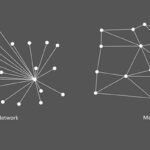 CEVA, Inc. announced the introduction of Nurlink’s NK6010 3GPP Rel.14 eNB-IoT System-on-Chip (SoC) powered by the CEVA-Dragonfly NB2 IP solution.
CEVA, Inc. announced the introduction of Nurlink’s NK6010 3GPP Rel.14 eNB-IoT System-on-Chip (SoC) powered by the CEVA-Dragonfly NB2 IP solution.
NK6010 is a highly cost and power efficient NB-IoT SoC designed specifically to enable narrowband connectivity in massive IoT devices such as smart meters, wearables, asset trackers and industrial sensors. The SoC, built around the CEVA-Dragonfly NB2 solution, incorporates RF front-end, RF transceiver, cellular baseband, power management unit and application processor, all highly-integrated to minimize the size and cost of the solution. It supports all NB-IoT frequency bands and major global carriers, ensuring smooth and rapid certification of devices on any NB-IoT commercial network around the world. The SoC also includes an extremely low-power multi-GNSS subsystem, supporting GPS/Beidou/Galileo/GLONASS global navigation systems, to ensure highly-accurate device tracking and locating, worldwide.
Michael Boukaya, vice president and general manager of the wireless business unit at CEVA, stated: “NB-IoT has reached critical mass, with more than 60 operators around the world already supporting the standard and dozens more launching coverage imminently. Now the drive towards ultra-low cost NB-IoT chipsets and modules has begun and Nurlink, powered by our CEVA-Dragonfly NB2 IP solution, is one of the early entrants into this fast growing space. We applaud their efforts to reach the market so quickly and look forward to monitoring their success.”
The CEVA-Dragonfly NB2 IP solution is a modular technology, composed of the CEVA-X1 IoT processor, an optimized RF Transceiver, baseband, and a protocol stack to offer a complete Release 14 Cat-NB2 modem IP solution that significantly reduces time-to-market and lowers entry barriers. It is a fully software-configurable solution and can be extended with multi-constellation GNSS and sensor fusion functionality. The IP includes a reference silicon of the complete modem design, including an embedded CMOS RF transceiver and PA, an advanced digital front-end, physical layer firmware, and a protocol stack (MAC, RLC, PDCP, RRC, and NAS).


Leave a Reply